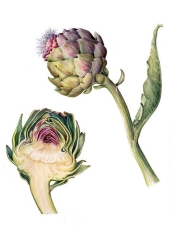
 3
3




 2
2




Life's too short, eat desert first! [Source of quote unknown]
You have to be warped to weave [ditto!]
 3
3




Invasive plants are Earth's way of insisting we notice her medicines. Stephen Herrod Buhner
Everyone learns what works by learning what doesn't work. Stephen Herrod Buhner




Anne Miller wrote:Vetiver is usually recommended for erosion control. It has deep roots and also makes a mass.
Here are some threads to introduce vetiver for you or others:
https://permies.com/t/26103/Feedback-vetiver
https://permies.com/t/241423/Vetiver-grass-experiences-buy
Alfalfa is another good choice as the tap root can go down as far as 15 feet.
 2
2




Jill Dyer wrote:Asparagus? Grows from seed (slow) or 'crowns' - Takes 3 seasons to establish to the point of cutting spears for eating though. Up to 1 metre tall feathery stalks when left to grow - necessary to allow some to provide energy for the next crop. Most things leave it alone, but the berries can spread about.
Maybe rhubarb - that loves a damp/wet spot and the roots go on forever.
 2
2




Sam Shade wrote:Think vetiver would survive a 10 F low in winter?
Extreme climatic conditions: vetiver can survive in prolonged drought, flood and temperatures of -15°C to + 55°C. Its growth is limited by frost but it can handle temperatures below freezing for a short period.
Invasive plants are Earth's way of insisting we notice her medicines. Stephen Herrod Buhner
Everyone learns what works by learning what doesn't work. Stephen Herrod Buhner

 2
2




- Tim's Homestead Journal - Purchase a copy of Building a Better World in Your Backyard - Purchase 6 Decks of Permaculture Cards -
- Purchase 12x Decks of Permaculture Cards - Purchase a copy of the SKIP Book - Purchase 12x copies of Building a Better World in your Backyard
 2
2




Timothy Norton wrote:A potential fun and classic erosion control plant that surprisingly is edible (to me at least) would be cat-tails but they do get tall. You could use them towards the edges of the field of view? You would need to do some management of them but they produce good biomass.
 6
6




I was thinking horseradish too tho I want to see if the greens are any good before I plant it en masse.

 1
1




Sam Shade wrote:I want to remove the privet that crowds the south-facing perimeter of my pond, but I do value the erosion control provided by those tenacious and expansive root systems.
How Permies works: https://permies.com/wiki/34193/permies-works-links-threads
My projects on Skye: The tree field, Growing and landracing, perennial polycultures, "Don't dream it - be it! "
 1
1




Nancy Reading wrote:
Sam Shade wrote:I want to remove the privet that crowds the south-facing perimeter of my pond, but I do value the erosion control provided by those tenacious and expansive root systems.
So this is a south facing bank? Is it the slope that makes it an erosion risk? How wet? I'm just trying to visualise the layout. I'd plant cardoon and globe artichoke in well drained areas rather than by a pond, but my summer is probably a lot cooler than yours.
Scorzonera (black salsify or Scorzonera hispanica) had very tasty leaves and dandelion like flowers on long stems - it also has a long tap root, which may be good for erosion control. Sweet Cicely (Myrrhis odorata) is a pretty umbellifera beloved of insects, maybe a bit wild looking, but has tasty sweet aniseed flavoured seeds when picked green. long spreading roots like rhubarb, but a little smaller perhaps. The leaves go well with rhubarb as it really does reduce the amount of sugar to make the rhubarb palatable. Day lillies have pretty tough root systems I believe and are also very ornamental.

|
Please all, and you will please none --Aesop ... displeased tiny ad:
Rocket Mass Heater Resources Wiki
https://permies.com/w/rmh-resources
|






